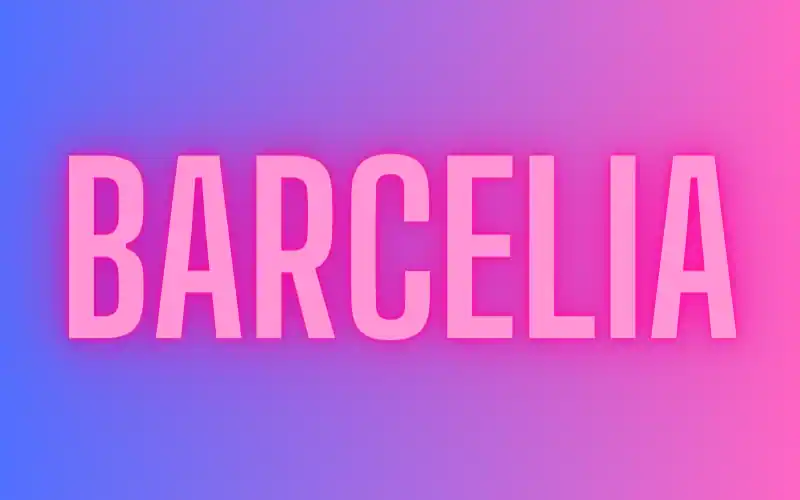Have you been hearing all the buzz about barcelia lately? This hot new superfood has been popping up everywhere. Maybe you’ve seen barcelia smoothies on the menu at your local juice bar or noticed barcelia powder on the shelves at your grocery store. If you’re wondering what exactly barcelia is and why everyone seems to be talking about it, you’ve come to the right place. This article will give you the lowdown on barcelia – what it is, where it comes from, why it’s so good for you, and how you can incorporate it into your diet. By the end of this, you’ll be a barcelia expert and ready to reap the nutritional benefits of this amazing plant.
What Is Barcelia?
Barcelia is a genus of flowering plants in the orchid family, Orchidaceae. These tropical orchids are epiphytes, meaning they grow on other plants, usually trees, without parasitizing them. The genus Barcelia contains about 15 species native to Central America, northern South America, and the Caribbean.
Barcelia orchids produce colorful, fragrant flowers with three petals and a long, curling lip petal. The flowers are often shades of yellow, orange, and red with bold markings. Some species, like Barcelia lobata, have flowers that can reach up to 6 inches across. Barcelia orchids typically bloom in the spring and summer.
These orchids do best in warm, humid environments. As epiphytes, they are adapted to absorbing moisture from the air and rain. Plant Barcelia orchids in well-draining media like bark chips, perlite, or sphagnum moss. Water and fertilize regularly, especially during the growing season. Provide bright, filtered light since direct sun can burn the leaves.
With the proper care and conditions, Barcelia orchids can thrive and produce their spectacular blooms for many years. If you’re looking to add a bold, tropical touch to your home, Barcelia orchids are a perfect choice. Their dazzling flowers and intriguing growth habit are sure to make them the star of your plant collection.
The History and Origins of Barcelia
Barcelia has been cultivated for centuries and has a rich history.
Origins in South America
Barcelia originated in the tropical rainforests of South America, specifically in the Amazon basin. Local tribes originally used the plant for medicinal purposes and as a natural dye for clothing and decorations. Spanish explorers first discovered barcelia in the early 1500s and brought it back to Europe, where it gained popularity as an ornamental plant.
Introduction to the West
In the 1700s, barcelia was introduced to European botanical gardens and plant enthusiasts. Its striking red and yellow flowers and ease of care made it a favorite. By the Victorian era, barcelia could be found in gardens across Europe and Britain.
Modern Popularity
Today, barcelia remains a popular houseplant and garden plant. There are over 200 cultivated varieties with different leaf shapes, flower colors, and growth habits. Whether you want an upright bush, trailing vines, or even a bonsai, there’s a barcelia for you.
With a long and storied history, barcelia has spread from the rainforests of South America to homes and gardens around the world. This tropical beauty has enduring popularity thanks to its colorful blooms, hardiness, and adaptability. If you’re looking for an easy to care for plant with major curb appeal, barcelia is a perfect choice.
Notable Locations and Landmarks in Barcelia
Barcelia has some notable locations and landmarks you won’t want to miss. As you explore the city, be sure to check out these highlights:
Plaza Mayor
The main square of Barcelia, Plaza Mayor is the historic heart of the city. Flanked by colorful buildings, it’s a popular spot for people watching while enjoying a coffee or glass of sangria at one of the many cafes. In the center stands a statue of King Philip III, who ruled Spain in the 17th century. Plaza Mayor is also the site of many city events and festivals throughout the year.
Sagrada Familia Basilica
Antoni Gaudí’s masterpiece, the Sagrada Familia church, is Barcelona’s top attraction. Still under construction, this ornate Roman Catholic basilica began in 1882 and is not expected to be complete until at least 2026. Two of its facades and eight towering spires have been finished, each richly decorated with symbolic details. Go early and take a guided tour to learn about the architectural and spiritual significance behind this UNESCO World Heritage Site.
Las Ramblas
One of Europe’s most well-known pedestrian boulevards, Las Ramblas stretches for 1.2 kilometers through central Barcelona. Lined with shops, restaurants, and street performers, it’s a perfect spot for an evening stroll. Look for the mosaic by Joan Miró, and the Liceu Opera House, which hosts world-class opera, theater, and dance performances. At the southern end sits the Columbus Monument, a 60-meter tall pillar with an observation deck offering panoramic views of the city.
Barcelona Beach
Barcelona’s coastline stretches for over 4 kilometers along the Mediterranean Sea. The beach is a popular spot for sunbathing, swimming, and people watching during the summer months. You can rent lounge chairs and umbrellas, or simply find a spot in the sand. A promenade runs parallel to the beach, ideal for walking, jogging or biking. Numerous bars and restaurants along the boardwalk have outdoor patios where you can enjoy a drink or meal with a sea view.
Experiencing the Culture and Cuisine of Barcelia
Barcelia is a cultural melting pot, with influences from all over the Mediterranean and beyond. Experiencing the local culture and cuisine is a must when visiting.
Food
The food in Barcelia reflects its history as a port city. You’ll find seafood paella, made with saffron rice and whatever fresh seafood is available, like shrimp, mussels and calamari. Tapas, small plates meant for sharing, are popular. Try patatas bravas, fried potatoes with a spicy tomato sauce, jamón serrano, cured Spanish ham, and albondigas, meatballs in a tomato sauce. For dessert, churros, fried-dough pastry sticks, are dipped in thick hot chocolate. And of course, no meal is complete without a glass of tempranillo red wine.
Festivals
Barcelians love any excuse to party. During Las Fallas in March, huge papier-mâché sculptures are paraded and then burned. La Tomatina in August is a massive tomato fight in the streets. And Pride Barcelona in June is one of the biggest LGBTQ celebrations in the world.
Architecture
Barcelona’s architecture is an eclectic mix. You’ll see examples of Gothic, Modernisme and postmodern styles, sometimes right next to each other. Don’t miss Sagrada Família church, Gaudí’s unfinished masterpiece. Park Güell is another of Gaudí’s whimsical creations. And La Rambla, a long tree-lined pedestrian mall, is perfect for strolling.
Nightlife
Barcelona’s nightlife is legendary. Start your evening with cocktails at a rooftop bar like Hotel Brummell or The Loft. Then head to the beach clubs along Barceloneta beach. Opium and Shôko are open late into the night, with lounge seating, bars and dance floors. If you’re still going at dawn, catch the sunrise at Sala Apolo or Moog club. The party never really stops in this city that truly never sleeps.
Experiencing Barcelona through its vibrant culture, cuisine and nightlife will give you memories to last a lifetime. No wonder so many visitors end up returning again and again. ¡Viva Barcelona!
Planning Your Dream Vacation to Barcelia
Planning a dream vacation to Barcelia sounds exciting, but where do you even start? Here are some tips to help you plan an unforgettable trip.
Choose a region to explore
Barcelia has six distinct regions, each with its own charm. The sunny coastline, historic cities of the interior, the majestic mountains, and secluded islands all offer different experiences. Decide what interests you the most—culture, cuisine, adventure, relaxation—and pick a region that fits your mood. The tourism board’s website has overviews of each region to help determine what appeals to you.
Book your accommodation
Barcelia has lodging options for any budget. You can rent an apartment, stay in a boutique hotel, camp under the stars, or even sleep in a monastery! Make reservations for at least your first night or two, especially if traveling in the busy summer season. Leave some nights unbooked so you have flexibility in case you fall in love with a place and want to extend your stay.
Don’t miss the food
Barcelian cuisine is world renowned, so come hungry! Each region has signature dishes made from local ingredients. Seafood along the coast, hearty stews in the mountains, fresh meats and produce in the countryside. And you can’t leave without trying Barcelia’s famous wine and olive oil. The best way to experience Barcelia’s food is by visiting small family-run restaurants, cafes, and bars. Just follow your nose—you won’t be disappointed!
Learn some basic phrases
While many Barcelians speak English, especially those working in hospitality, it’s polite to know some basic greetings and phrases. Carry a pocket dictionary or translation guide and try out a few greetings like “Buongiorno” (good day) or “Grazie” (thank you). Your effort will be much appreciated. Barcelians are very proud of their culture, so showing interest in their language is a great way to connect with locals.
With stunning scenery, welcoming people, and unparalleled food and wine, Barcelia will charm you at every turn. Start planning your dream vacation today for an escape you’ll never forget!
Conclusion
Maybe now you’ve got a better sense of what Barcelia is all about. This magical land of natural wonders, delicious food, vibrant culture, and adventure around every corner calls out to the explorer in all of us. What are you waiting for? Pack your bags, brush up on your Barcelian, and embark on a journey you’ll never forget. The verdant rainforests, towering mountains, and pristine beaches are ready to welcome you with open arms. Not to mention the friendly locals who will make you feel right at home with their infectious smiles and hospitality. Barcelia has everything you never knew you needed. Go discover your own personal paradise. The only question is, what are you still doing here? Your Barcelian adventure awaits!


